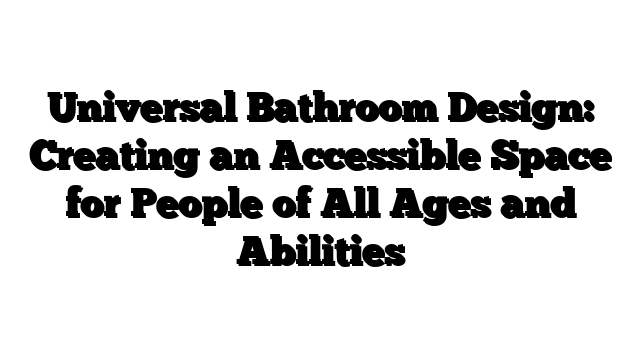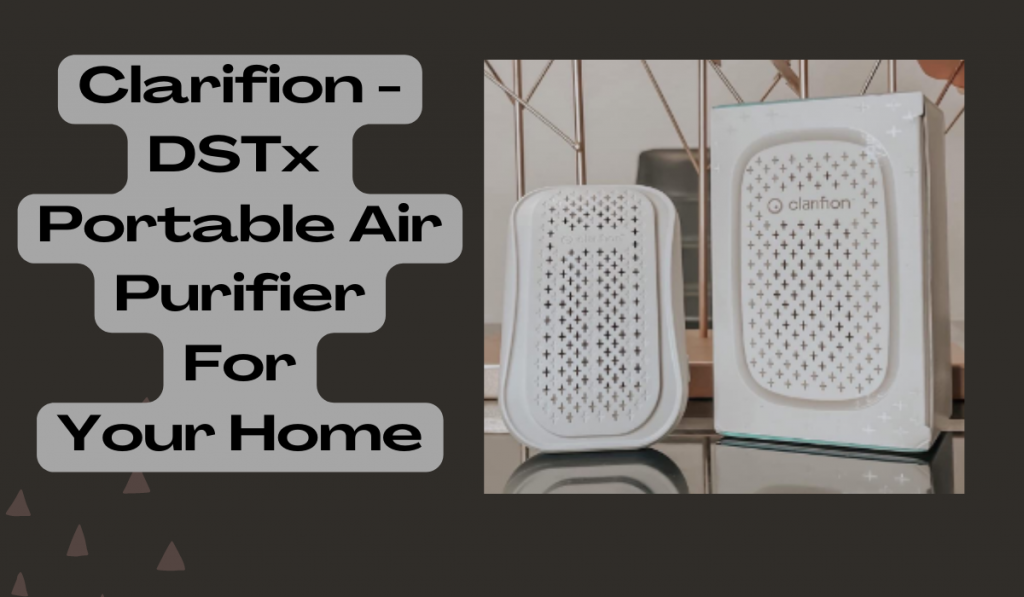The bathroom is one of the most essential rooms in any home, but its design can often present challenges for individuals with disabilities or limited mobility. Universal bathroom design, also known as inclusive design, aims to create spaces that are accessible and functional for everyone, regardless of age or physical abilities. In this article, we’ll explore the concept of universal design for bathrooms, providing valuable insights and practical ideas to make this space truly inclusive. For expert guidance on incorporating universal design principles into your bathroom, consider consulting with Northeast Design and Build from Providence, RI. Their expertise can ensure that your bathroom not only meets your aesthetic preferences but is also tailored to the needs of every member of your household.
The Principles of Universal Design
Before diving into bathroom-specific details, let’s understand the key principles of universal design:
Equitable Use
Universal bathrooms should be usable by people with diverse abilities. This means considering the needs of individuals with mobility limitations, vision or hearing impairments, and cognitive disabilities.
Flexibility in Use
A universally designed bathroom should accommodate a wide range of individual preferences and abilities. Flexibility in use includes adjustable features and layouts that can be adapted as needs change.
Simple and Intuitive Use
The design should be straightforward and intuitive, eliminating the need for specialized knowledge or complex instructions. Elements should be easy to understand and operate.
Perceptible Information
Information and feedback should be provided in multiple sensory modes, making it accessible to individuals with different sensory abilities. This can include tactile indicators, visual cues, and audible signals.
Tolerance for Error
Universal bathrooms should minimize hazards and the adverse consequences of accidental or unintended actions. Safety features and error-reduction strategies are integral.
Low Physical Effort
Design elements should require minimal physical effort to use, accommodating individuals with varying levels of strength and mobility.
Size and Space for Approach and Use
Adequate space should be provided for individuals using mobility aids, such as wheelchairs or walkers, to approach and use bathroom fixtures comfortably.
Doorways and Entryways
Wider Door Openings
Ensure that bathroom doors are wide enough to accommodate wheelchairs and mobility devices. A minimum width of 36 inches is recommended.
Lever Handles
Replace traditional door knobs with lever handles, which are easier to grip and operate for individuals with limited hand strength or dexterity.
Non-Slip Flooring
The bathroom is one of the most essential rooms in any home, but its design can often present challenges for individuals with disabilities or limited mobility. Universal bathroom design, also known as inclusive design, aims to create spaces that are accessible and functional for everyone, regardless of age or physical abilities. In this article, we’ll explore the concept of universal design for bathrooms, providing valuable insights and practical ideas to make this space truly inclusive. When it comes to variety of flooring options, consulting with experts help you choose the right materials to meet both aesthetic and accessibility needs. Consider installing non-slip flooring in the bathroom to reduce the risk of slips and falls, and explore textured tiles or slip-resistant coatings for a safe and stylish solution that enhances your inclusive bathroom design.
Curbless or Roll-In Showers
Curbless Showers
Eliminate shower curbs or thresholds, allowing easy entry for individuals with mobility aids. A gently sloping floor design can direct water toward the drain.
Roll-In Showers
For wheelchair users, consider roll-in showers with a wide entrance and a continuous floor surface, enabling seamless access.
Grab Bars and Handrails
Install grab bars and handrails in strategic locations, such as near the toilet and in the shower. These provide stability and support for individuals with balance or mobility challenges.
Adjustable Fixtures
Adjustable Shower Heads
Install adjustable-height shower heads that can accommodate users of different heights and mobility levels.
Adjustable Mirrors
Mount mirrors on adjustable arms or brackets to allow users to position them at the desired angle and height.
Accessible Sink and Vanity
Wheelchair Access
Ensure that the sink and vanity area is wheelchair-accessible, with knee clearance beneath the sink for comfortable use.
Lever Faucets
Use lever-style faucets that are easy to turn on and off for individuals with limited hand strength
Adequate Lighting
Task Lighting
Install task lighting around the vanity and shower areas to ensure proper visibility for grooming and bathing tasks.
Motion-Activated Lighting
Consider motion-activated lighting that turns on automatically when someone enters the bathroom, providing added convenience and safety.
Accessible Toilet
Raised Toilet Seat
A raised toilet seat can make it easier for individuals with mobility limitations to sit down and stand up from the toilet.
Grab Bars Near the Toilet
Position grab bars near the toilet to provide support and stability during transfers.
Color and Contrast
Use color and contrast to highlight important elements and create visual cues. This can help individuals with low vision or cognitive disabilities navigate the bathroom more easily.
Universal bathroom design is about creating an inclusive space where everyone can maintain their independence and dignity. By embracing the principles of universal design and implementing thoughtful modifications, you can transform your bathroom into a welcoming and accessible oasis that meets the needs of people of all ages and abilities. An accessible bathroom not only enhances the quality of life for individuals with disabilities but also adds value to any home by making it more universally appealing.
James Martin is a passionate writer and the founder of OnTimeMagazines & EastLifePro. He loves to write principally about technology trends. He loves to share his opinion on what’s happening in tech around the world.


